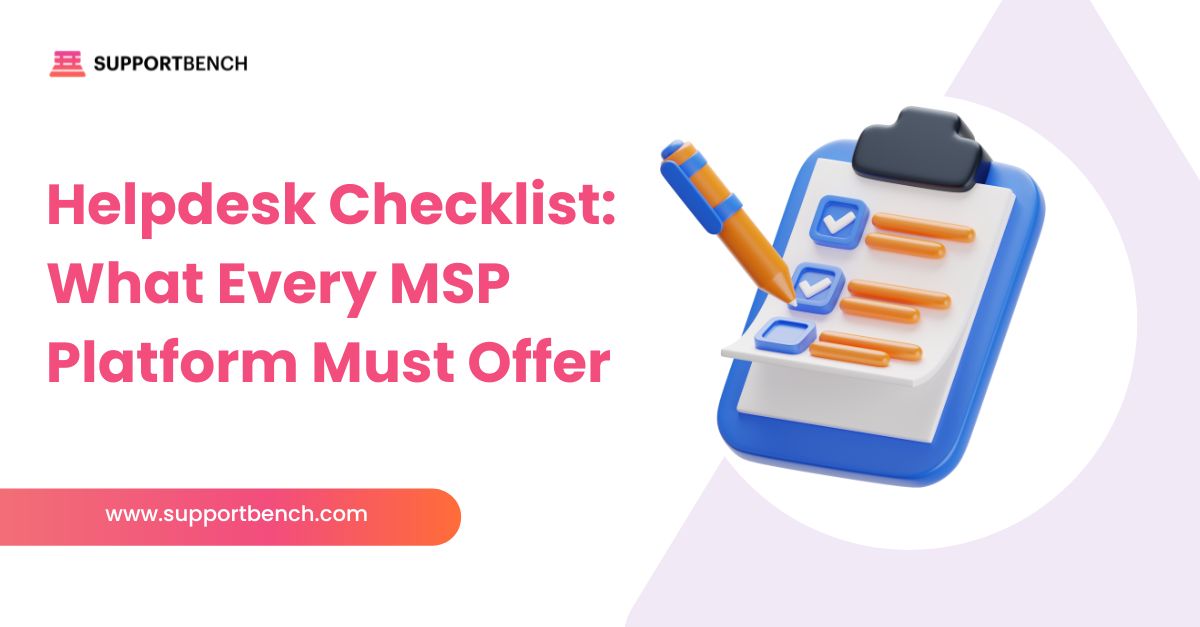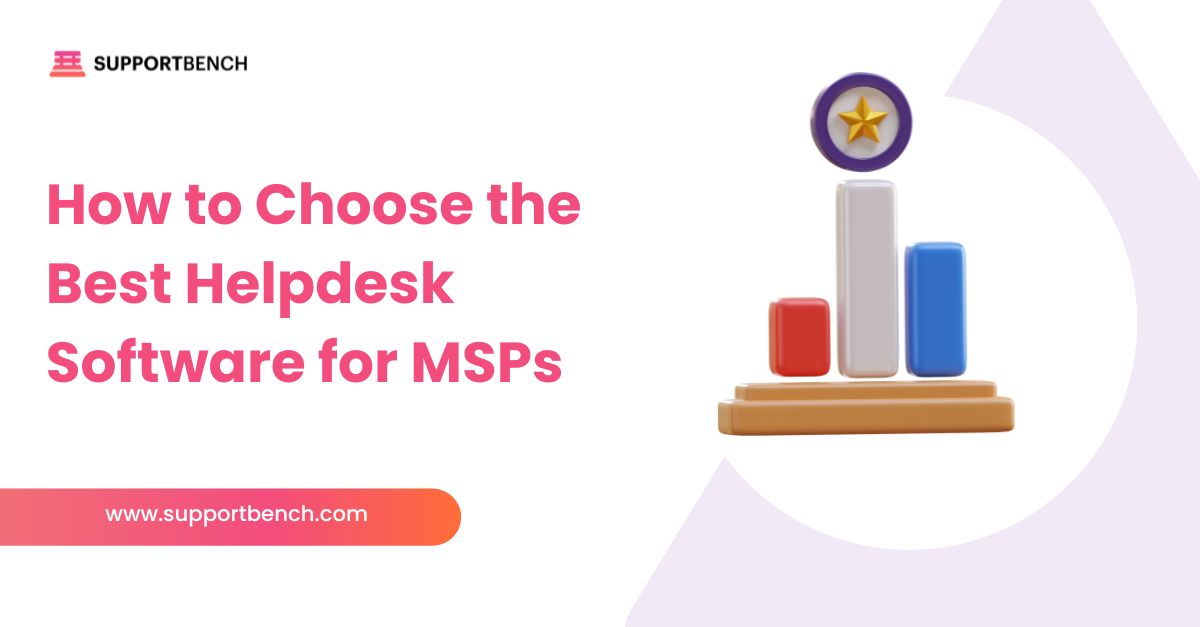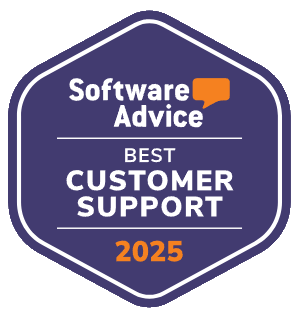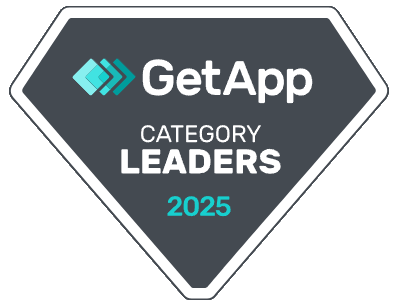Switching helpdesk providers isn’t just a tech upgrade—it’s a strategic move that affects customer satisfaction, team productivity, and long-term growth.
The decision to switch often starts with recurring problems: outdated features, slow performance, or tools that no longer match your team’s needs. But making the move is more than recognizing flaws. It’s about knowing how to plan, test, and execute the transition without disrupting daily operations.
Done poorly, a switch can lead to data loss, internal confusion, and reduced service quality. But done right, it can unlock better workflows, faster resolution times, and a more scalable support environment.
This guide walks you through a clear, step-by-step process—covering everything from early evaluations to final provider offboarding—so your next helpdesk doesn’t just replace the old one but improves on it in every way.

Here is the Quick Answer:
Switching helpdesk providers is a major move, but the right process makes it smooth. Start by assessing system gaps, researching new options, and planning data migration carefully. Train your team, communicate changes, and monitor performance post-switch. Supportbench simplifies the journey with tools and support that help you transition with confidence.
1. Assess Your Current Helpdesk System
Before initiating a switch, take a close look at what your current system does—and doesn’t—do for your team. This initial assessment shapes every decision that follows.
Performance Bottlenecks
Does your current platform lag, crash, or delay ticket processing? System instability can frustrate both customers and agents, ultimately hurting response time and satisfaction scores.
Missing Features
Lack automation? Struggling with limited channel support or outdated analytics? If essential functions like ticket management, escalation workflows, or customer history tracking are missing or clunky, it’s a red flag.
Limited Scalability
As your team or customer base grows, does your system keep up—or slow things down? A rigid system that can’t adapt to higher ticket volumes or multiple departments may block future growth.
Agent and Customer Experience
Is your helpdesk intuitive? If agents need workarounds or customers find the portal confusing, those inefficiencies pile up. A seamless, user-friendly interface saves time and reduces friction across the board.
✅ Why Supportbench?
Supportbench delivers speed, flexibility, and simplicity in one platform. From intelligent ticket routing to customizable dashboards and scalable workflows, it’s built to grow with your business—without the growing pains.
2. Research and Choose a New Helpdesk Provider
Once you’ve clarified what’s missing from your current setup, it’s time to find a better fit. Prioritize functionality, usability, and long-term alignment—not just features on paper.
Key Features
Look for platforms that include intelligent automation, robust analytics, role-based access, and multichannel support. These are essentials, not extras.
Integration Compatibility
Ensure the new helpdesk integrates easily with your existing tools—CRMs, email platforms, chat systems, or e-commerce tools. Frictionless integration helps avoid workflow breakdowns.
Interface Usability
Even the most powerful system falls short if it’s hard to use. Choose a platform with an intuitive interface that requires minimal training and makes agents productive from day one.

Quality of Support
Evaluate the vendor’s support availability, responsiveness, and onboarding resources. Will they help your team resolve setup issues quickly and stay engaged long-term?
Transparent Pricing
Compare pricing tiers carefully. Are critical features gated behind high-tier plans? Look for scalable, predictable pricing that aligns with your budget and usage patterns.
✅ Why Supportbench?
Supportbench combines advanced functionality with seamless integrations and a clean UI. Transparent pricing and responsive onboarding support ensure your switch is smooth and scalable.

3. Plan the Data Migration
A careless migration can disrupt workflows and lead to data loss. Planning it step by step ensures accuracy, speed, and minimal downtime.
Take Inventory
List what needs to move: tickets, customer profiles, tags, notes, knowledge base content, and historical analytics. A full audit clarifies scope and prevents last-minute surprises.
Map Your Fields
Match data from your old system to the new one. Field mismatches—like custom tags, priority levels, or user roles—can break continuity if not mapped in advance.
Choose the Right Tools
Use professional migration tools or consult your new provider for white-glove support. Manual transfers are risky unless you’re dealing with a very small dataset.
Back Everything Up
Before pressing go, create a complete backup of your current system. If something fails mid-transfer, you’ll need that snapshot to restore service or troubleshoot errors.
✅ Why Supportbench?
Supportbench offers guided migration support, field-mapping tools, and rollback protection—making the transition safer, faster, and stress-free.

4. Prepare Your Team for the New Helpdesk
Even the best system can fail without proper onboarding. Your team needs to be comfortable, confident, and trained in how to use the new platform from day one.
Start with Guided Walkthroughs
Introduce agents to the new system through short demos, guided tours, or live onboarding sessions. Cover basics like ticket handling, tagging, internal notes, and escalations.
Customize Training by Role
Team leads, support agents, and technical admins use the system differently. Tailor training modules to match these roles so everyone gets what they need—no more, no less.
Create a Practice Environment
Let staff explore features in a sandbox environment where they can test workflows without affecting live data. Hands-on familiarity builds confidence faster than documentation alone.
Offer Ongoing Support
Support doesn’t stop after onboarding. Create a feedback loop through office hours, knowledge base resources, and live Q&A to reinforce learning and troubleshoot early confusion.
✅ Why Supportbench?
Supportbench offers role-specific training tools, intuitive onboarding guides, and live sandbox environments to accelerate learning and minimize disruption.
5. Communicate with Stakeholders
Smooth transitions rely on clear communication across every group impacted by the change.
Keep Internal Teams in the Loop
Notify all internal departments—especially IT, operations, and leadership—about the migration timeline and any system downtimes or access changes. This coordination helps them plan ahead and provide support when needed.
Update Customers Proactively
Let customers know what’s changing. Will support email addresses, ticketing links, or chat interfaces look different? Use email, website banners, and in-product messages to reassure users and set expectations.
Notify External Partners and Vendors
If contractors, suppliers, or third-party partners interact with your helpdesk, update them too. Share access details, new protocols, or any API key changes so their operations remain uninterrupted.
✅ Why Supportbench?
Supportbench includes built-in tools for stakeholder notifications, customizable customer portals, and communication templates—making it easy to keep everyone informed and aligned.

6. Move to the New Helpdesk Platform
Once planning and training are complete, begin the actual transition in well-defined stages to minimize disruption.
Start with a Pilot Migration
Begin by moving a limited dataset—such as tickets from one department or a single support channel—into the new system. This test run helps identify errors, compatibility issues, or user challenges before scaling.
Proceed with Full Data Transfer
After a successful pilot, transfer the remaining data. Ensure all critical items—customer records, open and archived tickets, internal notes, and knowledge base content—are moved accurately and securely.
Monitor in Real Time
Keep a close eye on the migration dashboard throughout the process. Watch for stuck files, mismatched formats, or broken links. Resolve any problems immediately to avoid compounding issues during the go-live phase.
Conduct a Post-Migration Review
Once everything is in place, test system performance. Have agents open, respond to, and close test tickets. Verify that reports generate properly, automations trigger as expected, and no data is missing.
✅ Why Supportbench?
Supportbench provides expert onboarding assistance, built-in migration tracking, and personalized guidance to help your team switch over without delays or data loss.
7. Monitor and Optimize
Once the new helpdesk is live, focus on early performance checks and continuous improvement.
Track Performance Metrics
Monitor key performance metrics like first-response time, ticket resolution rate, and customer satisfaction. These benchmarks reveal how the new platform performs under real conditions and help pinpoint inefficiencies.
Gather Feedback
Ask frontline support agents and managers for their impressions of the new system. What’s working well? What’s slowing them down? Also, invite input from customers through post-ticket surveys or direct outreach to learn how the transition affected their experience.

Stay Current on Updates
Vendors often release enhancements or security updates. Regularly review changelogs, enable useful new features, and adjust configurations to take advantage of improvements.
Refine Your Workflows
Use what you learn to improve your internal processes. Tweak automations, consolidate steps, or reorganize queues. Incremental changes based on real-world use can significantly improve efficiency.
✅ Why Supportbench?
Supportbench offers real-time analytics, customizable dashboards, and role-based reporting to help you measure what matters and continually improve service delivery.
8. Offboard the Old Provider
Once your new helpdesk is fully operational, formally conclude the relationship with your previous provider to prevent security risks and lingering dependencies.
Review Contract Terms
Double-check your existing agreement for termination clauses, notice periods, and final billing procedures. Follow them carefully to avoid penalties or service overlap.
Retrieve All Data
Make sure you’ve downloaded all essential records—support tickets, customer profiles, internal notes, and reporting data. Keep these stored securely for future reference or audits.

Revoke Access
Remove access credentials for all team members, vendors, and integrations connected to the old system. This step is critical for protecting your data and maintaining platform security.
Close Financials
Settle any outstanding invoices, confirm the termination is acknowledged in writing, and request final documentation for your records. Closing the relationship professionally avoids complications down the line.
✅ Why Supportbench?
Supportbench’s customer success team helps you manage every step of the offboarding process, ensuring secure data transfers and a clean break from your previous system.
Summary of Steps for Switching Helpdesk Providers | ||
Step | Action | Benefits |
1. Assess Your Current Helpdesk System | Evaluate System Performance, Feature Gaps, Scalability, and User Experience | Helps Define System Requirements for a More Effective Provider |
| 2. Research and Choose a New Helpdesk Provider | Research Providers Based on Features, Integration, Interface, Support, and Pricing | Makes Informed Decisions by Comparing Providers Based on Needs |
3. Plan the Data Migration | Create a Data Inventory, Map Data Fields, Use Migration Tools, and Back Up Data | Prevents Data Loss and Ensures Accurate and Organized Migration |
| 4. Prepare Your Team for the New Helpdesk | Provide System Walkthroughs, Role-Specific Training, Hands-On Practice, and Ongoing Support | Prepares the Team for a Seamless Transition With Confidence |
5. Communicate with Stakeholders | Inform Internal Teams, Customers, and Vendors About the Transition | Keeps Everyone Informed, Reducing Confusion and Improving Coordination |
| 6. Move to the New Helpdesk Platform | Pilot Test Migration, Complete Full Migration, Monitor Progress, and Conduct Post-Migration Review | Ensures Smooth Transition and Verifies No Data Loss During Migration |
7. Monitor and Optimize | Monitor Performance Metrics, Collect Feedback, Stay Updated on System Features, and Continuously Improve | Improves System Performance, User Experience, and Operational Efficiency |
8. Offboard the Old Provider | Review Contract Termination Terms, Retrieve Necessary Data, Revoke System Access, and Settle Final Payments | Protects Your Business and Ensures a Professional Conclusion With the Old Provider |
In Closing
Switching helpdesk providers is a major step—but when done right, it strengthens your support operations and aligns your tools with long-term business goals.
Success depends on detailed planning, clear communication, and close monitoring during and after the transition. From assessing current limitations to migrating data and training teams, each step plays a crucial role in ensuring stability and improvement.
Supportbench is built for these moments. It offers flexible automation, real-time analytics, and seamless data migration tools—all designed to simplify the switch and deliver better customer outcomes.
Whether you’re upgrading from an outdated platform or repositioning for growth, Supportbench provides the support infrastructure you need to make the change smooth, strategic, and sustainable. Start your free trial today and see how a smarter helpdesk transition can transform your support team’s future.















